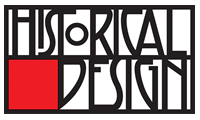Product Description
Andy Warhol, “Andy Warhol: Published on the Occasion of The Andy Warhol Exhibition at Moderna Museet in Stockholm February to March 1968” 1970



ANDY WARHOL (1928-1987) New York, NY
“Andy Warhol: Published on the Occasion of The Andy Warhol Exhibition at Moderna Museet in Stockholm February to March 1968” 1970
Published by Moderna Museet Stockholm, Boston Book and Art, Boston, MA, 1970. Printed in Sweden.
Dimensions:
Book: H: 10 3/4” x W: 8 5/16”
Custom leather box: H: 12 1/8” x W: 9 7/16” x D: 2”
Custom cloth case: H: 13” x W: 10” x D: 2 11/16”
One of the rarest of Warhol exhibition catalogs. This is the 3rd edition of the catalog that was published for a major exhibition of the late artists work that was held in Stockholm. There is no text except for some of Warhol’s famous quotes and 100’s of black & white photos of his work and wonderful photos of his superstars, life and work at the factory and stills and candids from his influential underground films. The covers are illustrated with full color photos of his famous flower silk screens.
Andy Warhol, “Andy Warhol: Published on the Occasion of The Andy Warhol Exhibition at Moderna Museet in Stockholm February to March 1968” 1970
MARIANNE BRANDT (1893-1983) Germany
METALLWARENFABRIK RUPPELWERK Gotha, Germany
Paper holder c. 1930
Black enameled and nickeled metal, hinged ball weight, ball feet
Marks: RUPPEL (in a circle), mehrfach geschützt
Illustrated: Die Metall Werkstatt am Bauhaus, (Berlin: Bauhaus-Archiv, Museum für Gestaltung, 1992) pp. 181-3;
H: 1 5/8” x W: 5 1/4” x D: 4”
Napkin holder c. 1930
Black enameled metal and nickeled base
Marks: RUPPEL (in a circle), mehrfach geschützt, 85/4440/37, Ruv 5 (numbers in red crayon)
H: 3 ¾” x W: 5” x D: 2 1/8”
For other works by Brandt for Metallwarenfabrik Ruppelwerk see: Die Metall Werkstatt am Bauhaus, (Berlin: Bauhaus-Archiv, Museum für Gestaltung, 1992) pp. 180-183; Die Metall Werkstatt am Bauhaus, (Berlin: Bauhaus-Archiv, Museum für Gestaltung, 1992) pp. 181-3; Avantgarde Design 1880-1930, Torsten Bröhan, Thomas Berg (Cologne: Benedikt Taschen, 1994) p. 105.
F.W. QUIST Esslingen, Germany
Ball ashtray “Smokny”
Nickel plated metal and black lacquered surface
Marks: Quist (on bottom)
H: 3 1/2″
The hardwarefactory F.W.Quist, Esslingen, Germany was founded 1868 as „Lackier- und Metallwaarenfabrik“ from the turner and metal-turner Jacob Schweizer, jun.. In the year 1872, the conversion of the business from a public company occurred, the “Actien-Plaqué Fabrik”. From 1890, the director and shareholders Friedrich Wilhelm Quist took over the business as alone-owner. In his succession four generations continued the business as family-businesses until 1981.
The business always stood for the manufacture more representatively props in the taste of the time. „Tischkultur, Gastlichkeit, Geschenkkultur dienten als Felder, einen gehobenen, verfeinerten Lebensstil zu dokumentieren und das unabhängig von der gesellschaftlichen Zugehörigkeit.“ (Served table-culture, hospitality, gift-culture as fields should document lifestyle, independently of the social affiliation) (Esslingen 2004, S.60)
So, the form of the 1970 as newness presented ball-ashtray was borrowed this famous „ball“ or „globe“ (presented for the first time, 1966 at the international furniture-fair in Cologne) and „bubble“ (1968) chairs by the finish designer Eero Aarnio. The completely new and unconventional shape, Aarnio developed on basis of the simplest geometrical form, the ball. It advanced to a cult-object of the following decade and didn’t lose anything modernity until today.
ARCHIBALD KNOX (1864-1933) UK
LIBERTY & CO. London
Square biscuit box w/cover 1903-05
Pewter with stylized blossom and leaf motif on each side
Marks: “Tudric” model no. 0237, MADE IN ENGLAND
Illustrated: Archibald Knox, ed. by Stephen A. Martin, London:Academy Editions, 1995, p. 83.
H: 5” x W: 4 3/8” square
